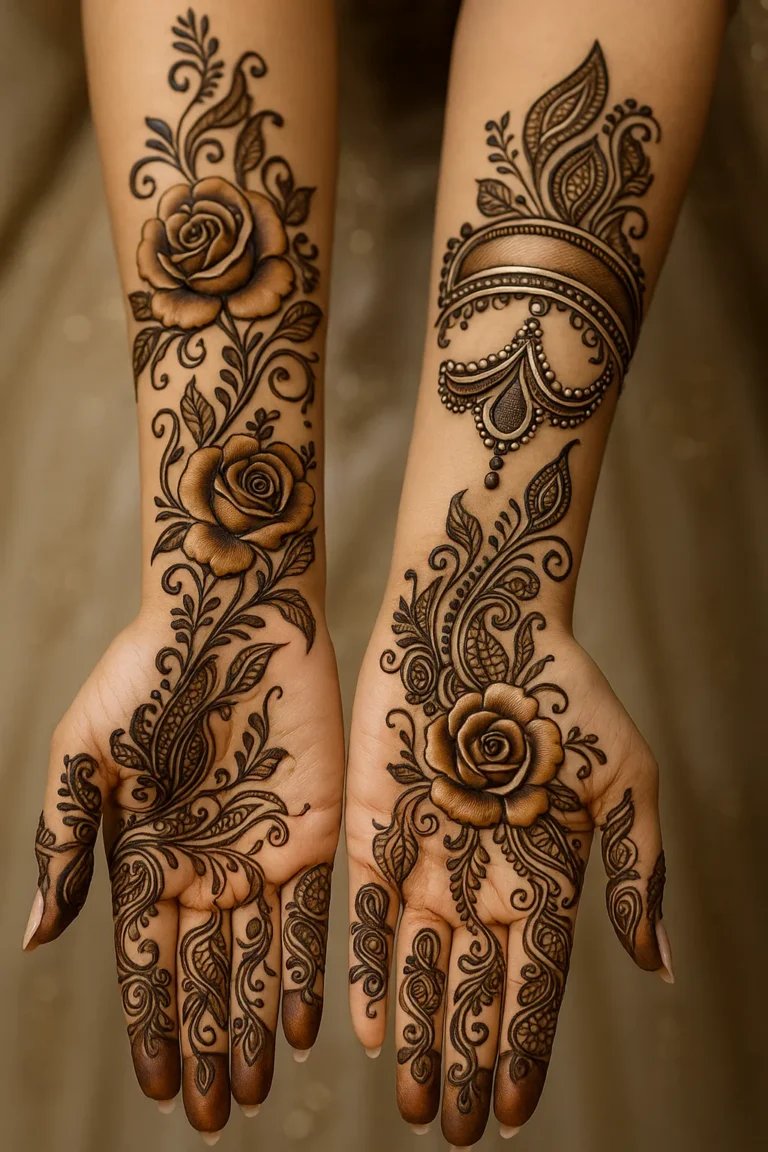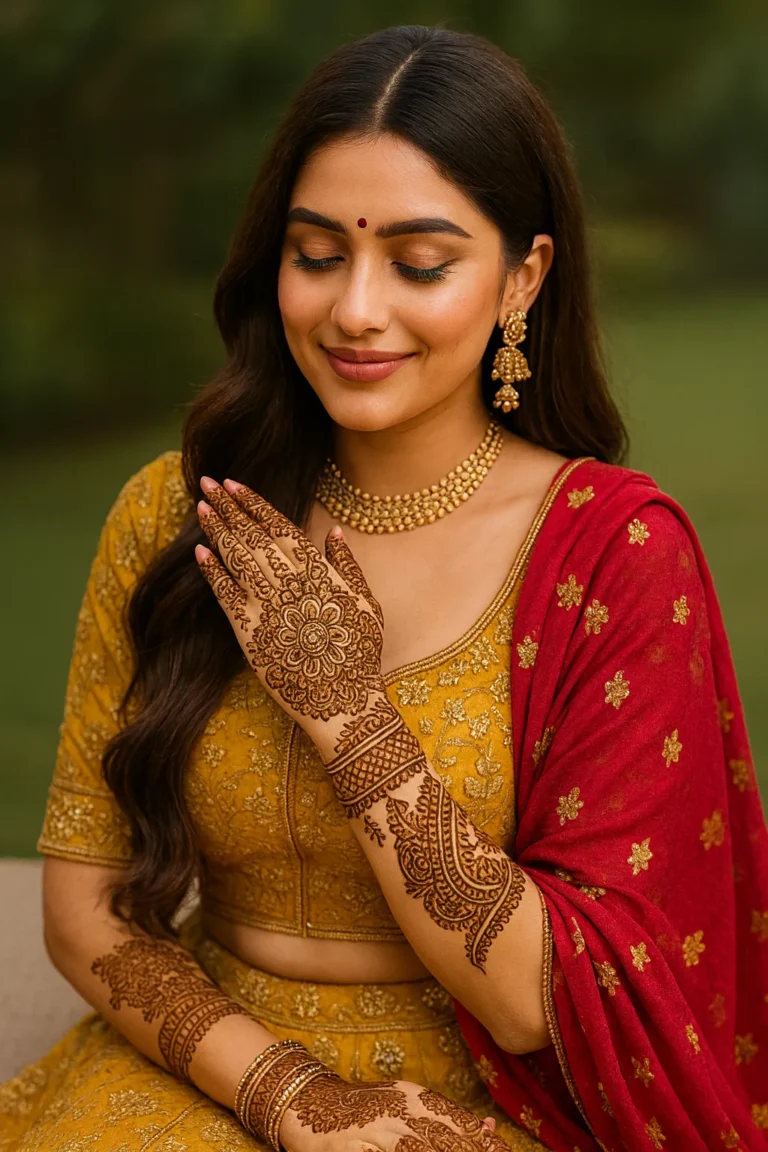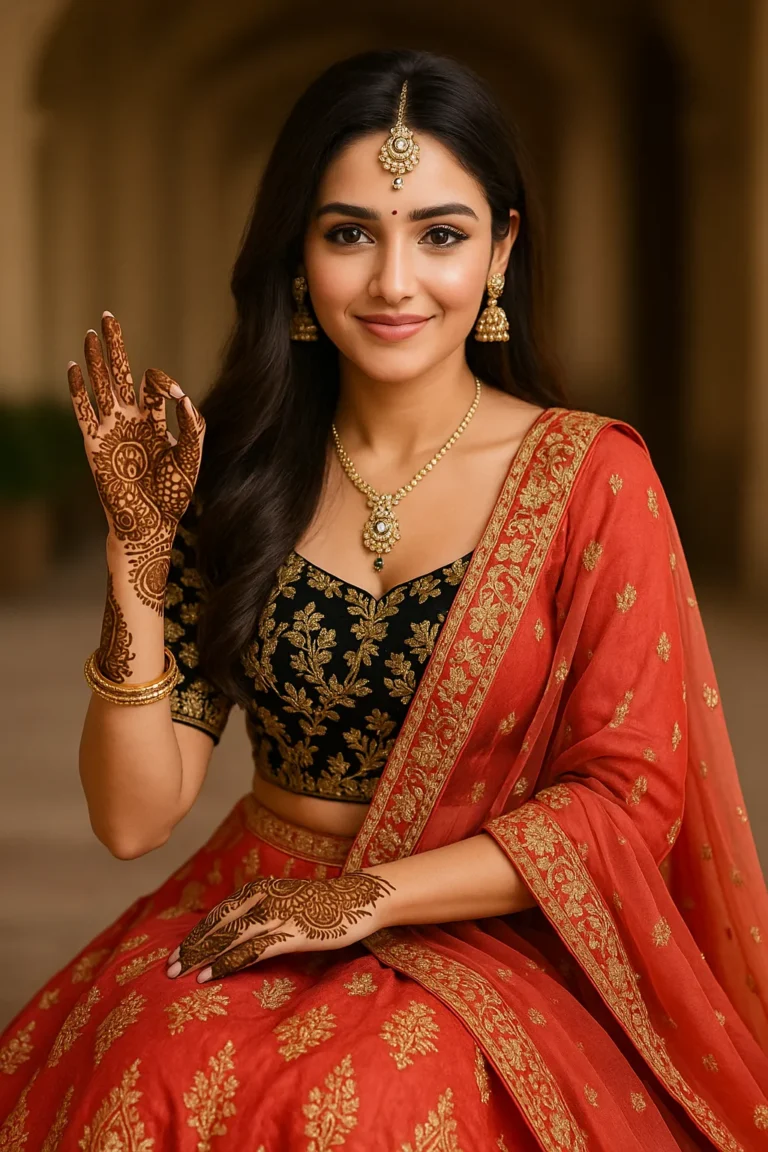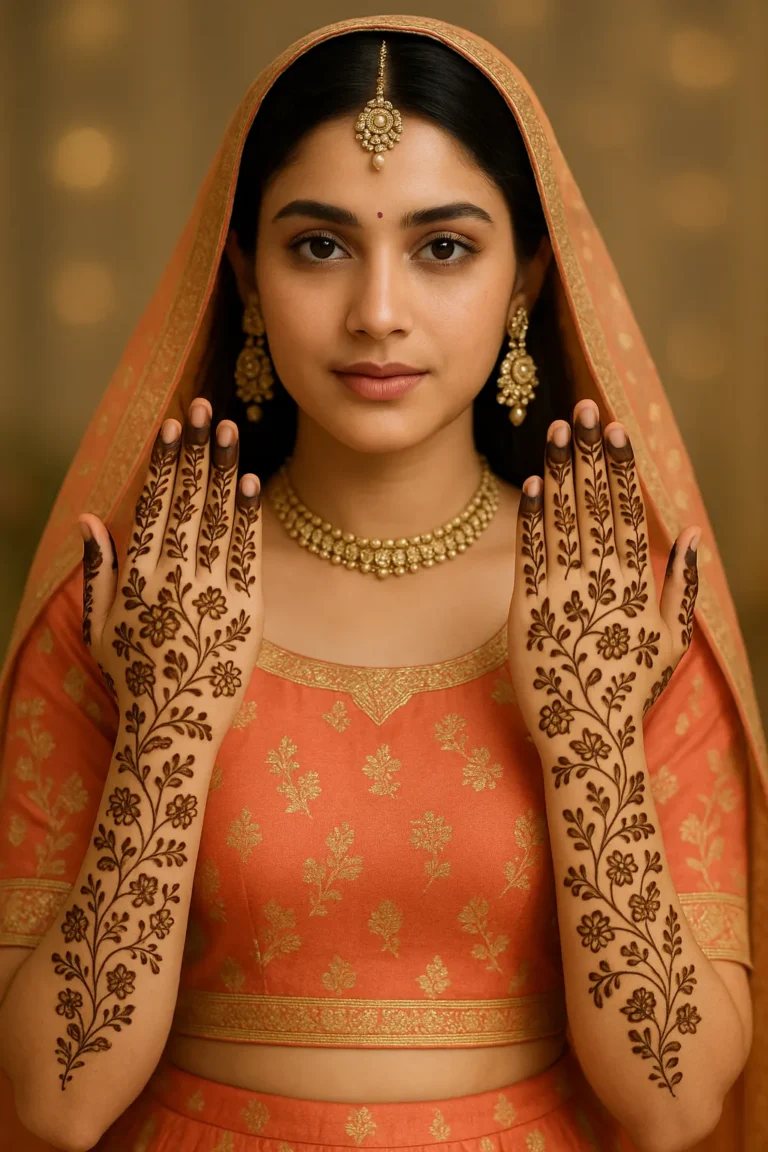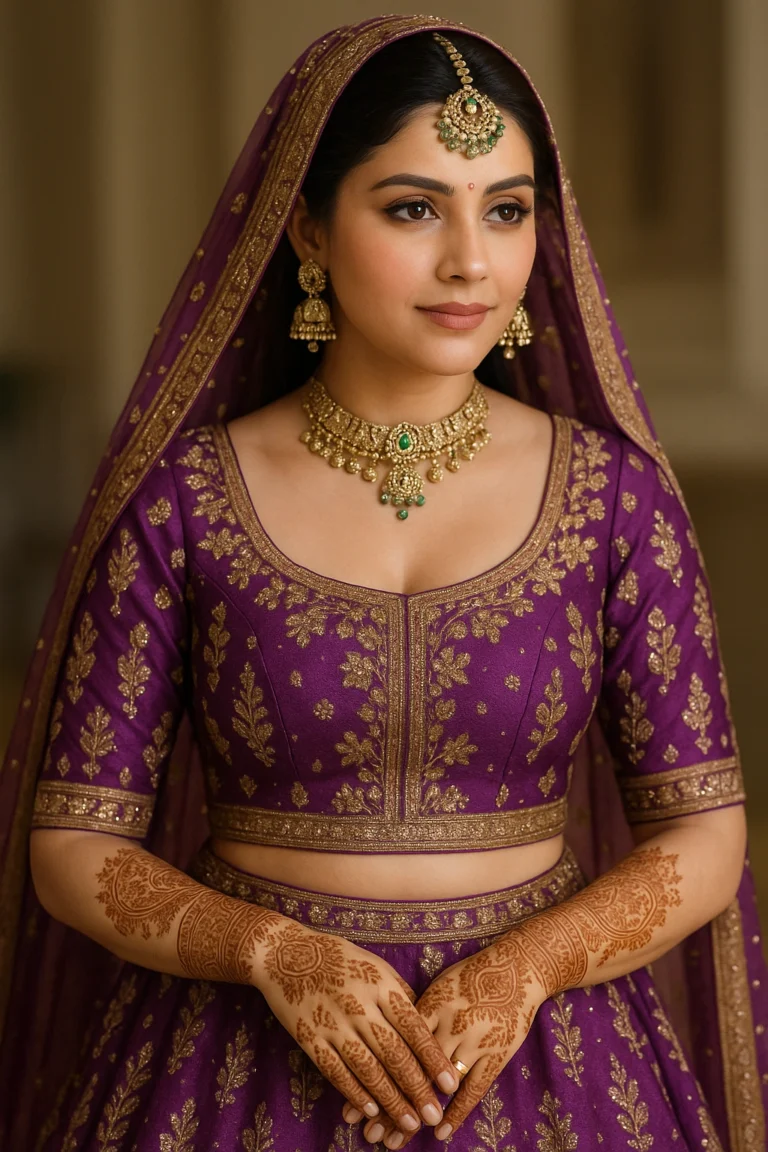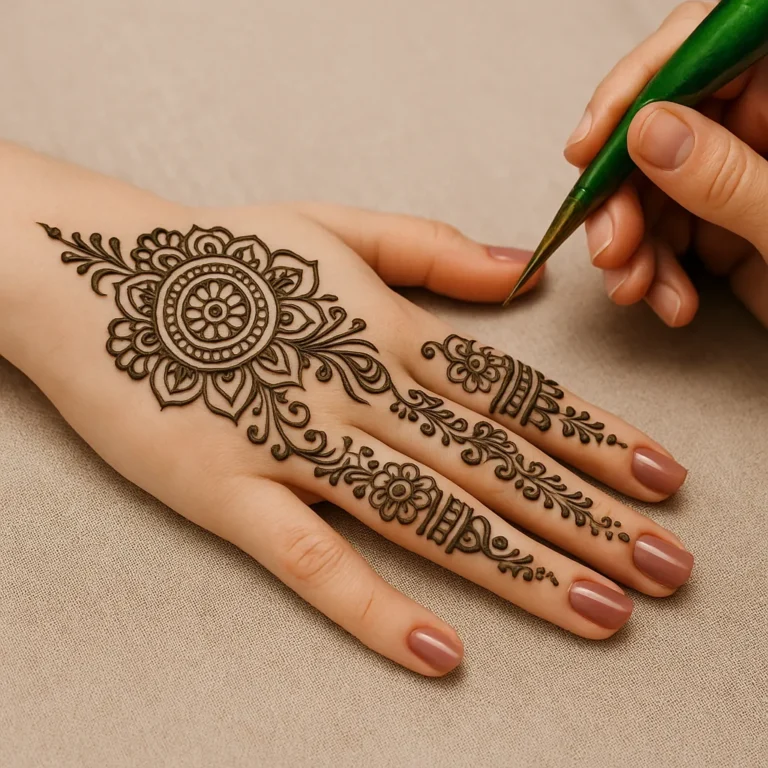Front Hand vs Back Hand Mehndi – Which Style Suits You Best?
In the world of mehndi, where creativity meets culture, one of the most frequently asked questions is: Should I apply mehndi on the front of my hands or the back? For some, it’s a matter of style. For others, it’s tradition. And for brides or festive-goers, the right choice can completely change how your entire look feels.
Whether you’re preparing for a wedding, attending a festival, or just exploring mehndi for fashion or fun, this article will help you understand the difference between front-hand and back-hand mehndi, how they express different aesthetics, and which one may be the perfect fit for you.
🪷 What’s the Difference Between Front Hand and Back Hand Mehndi?
At first glance, it might seem simple — front-hand mehndi covers the palm, while back-hand mehndi covers the outer side of the hand. But culturally and artistically, the difference goes much deeper.
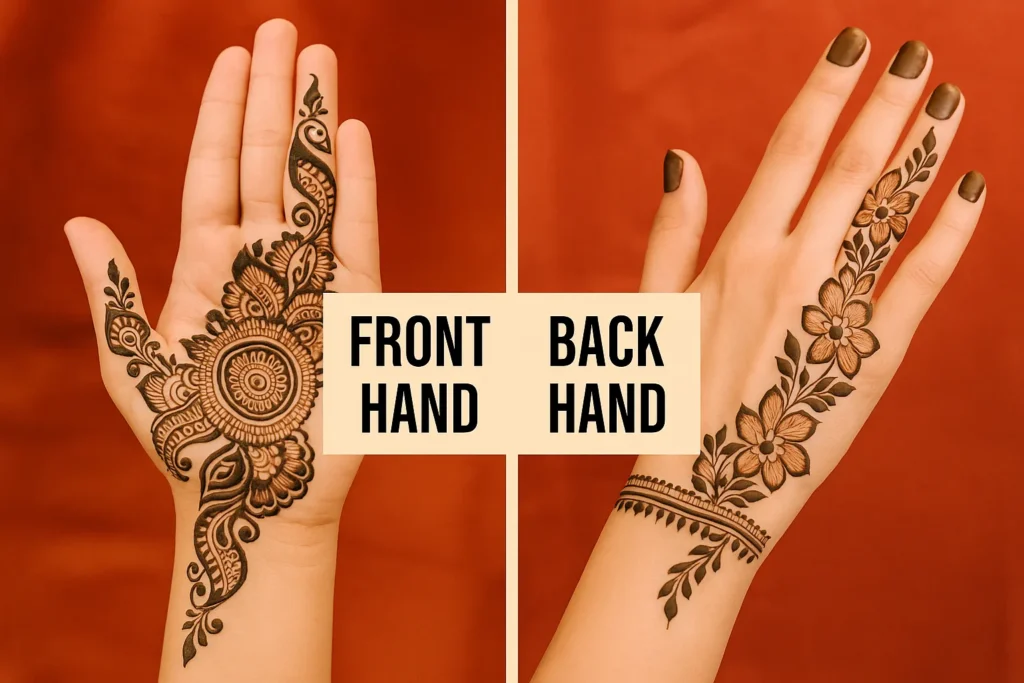
Top Mehndi Styles in India – Arabic, Marwari, Indo-Western & More Explained
How to Make Mehndi at Home – Step-by-Step Natural Cone Recipe
👉 Front Hand Mehndi:
- Covers the palm and fingers
- Traditionally used in weddings, rituals, and classical celebrations
- Allows for larger, denser motifs like mandalas, dulha–dulhan figures, religious symbols
👉 Back Hand Mehndi:
- Covers the dorsal (outer) side of the hand
- Usually more modern, trendy, and minimal
- Offers space for jewelry-style patterns, trails, and artistic flow
✨ Front Hand Mehndi – Classic, Detailed & Emotionally Rich
📌 Why It’s Popular:
Front-hand mehndi is where tradition lives. The palm offers a broad canvas, and the lines, mounts, and curves of the hand provide natural spaces to build art. From bridal stories to festival blessings, the palm is where mehndi expresses its full soul.
🌿 Common Designs:
- Dulha-Dulhan portraits
- Lotus, peacock, kalash, and doli motifs
- Mandalas and flower centers
- Religious icons (e.g. Ganesh ji, Om, moon, etc.)
- Hidden initials or wedding date
💍 Best For:
- Brides: Full-hand Indian or Rajasthani designs are common here
- Religious Ceremonies: Palm-based designs often feature symbols
- Karwa Chauth / Teej: Detailed symmetry matters
💡 Pro Tip:
If you want to include your love story, initials, or symbolic figures in mehndi, the front hand is ideal because it provides space and visibility.
🌸 Back Hand Mehndi – Stylish, Subtle & Social Media-Ready
📌 Why It’s Trending:
The back of your hand is what people see first — especially in photographs or when you hold something. That’s why back-hand mehndi has become popular among influencers, models, and younger women. It also mimics jewelry — like rings, bracelets, or haathphools.
🌿 Common Designs:
- Arabic-style floral trails from wrist to finger
- Jewelry mehndi (haathphool-style patterns)
- Geometric and Indo-western motifs
- Minimalist mandalas on the back of the hand
💍 Best For:
- Photoshoots: Holding a diya, flower, or cup of tea? This side shines.
- Eid & Diwali: Quick Arabic or Indo-fusion designs stand out
- College & Office Events: Easy to apply and remove, socially stylish
💡 Pro Tip:
Back-hand mehndi works best with long nails and light nail polish, which accentuates the artistic flow.
🎨 Design Style Breakdown: Front vs Back
| Element | Front Hand | Back Hand |
|---|---|---|
| Design Density | Very dense, fills entire palm | More open and airy |
| Best Use | Wedding, rituals | Photoshoots, parties |
| Time to Apply | Longer (1.5 to 3 hrs) | Faster (30–60 mins) |
| Symbolism | Rich and emotional | Stylish and modern |
| Visibility | Visible during puja, dining | Visible in photos, greetings |
💃 Which Style is Best for Brides?
A bridal look is incomplete without mehndi on both hands — front and back. But how the two are styled can make or break the look.
🔸 Traditional Brides:
- Front hand: Rajasthani with dulha–dulhan or religious motifs
- Back hand: Floral + paisley with haathphool shapes
🔸 Modern Brides:
- Front hand: Minimal mandala or Indo-Arabic blend
- Back hand: Bold Arabic trails or ring-style vines
💡 Use the front for cultural depth and the back for stylish statements.
📷 Insta-Worthy Poses: Which Side Wins?
Social media plays a big role in today’s mehndi trends. Let’s talk poses!
📌 Front Hand Poses:
- Palms together, forming a mandala
- Hiding the face behind palms
- Heart shape with palms facing camera
📌 Back Hand Poses:
- Holding a flower, diya, or coffee cup
- Wrist resting on lehenga or dupatta
- Ring-showcase pose with hand near chin
📸 Back-hand mehndi is a secret weapon for viral mehndi reels.
🧡 Real Experience: What I Did for My Sister’s Wedding
When my sister got married, she wanted a balance of culture and fashion. So, for the front, the artist designed dulha–dulhan scenes with kalash and musical instruments. On the back, she chose bold Arabic trails and haathphool patterns. In photos, her back-hand designs popped the most.
That day I learned something: the front-hand is for the family, the back-hand is for the camera.
🛑 Mistakes to Avoid When Choosing a Style
- Skipping front hand for weddings: It’s essential for rituals and blessings
- Overcrowding back-hand designs: Keep it simple and elegant
- Using the same pattern front and back: Create contrast to enhance beauty
- Neglecting nail prep: Clean, filed nails improve the overall look
- Applying lotion before mehndi: Always keep skin oil-free for better stain
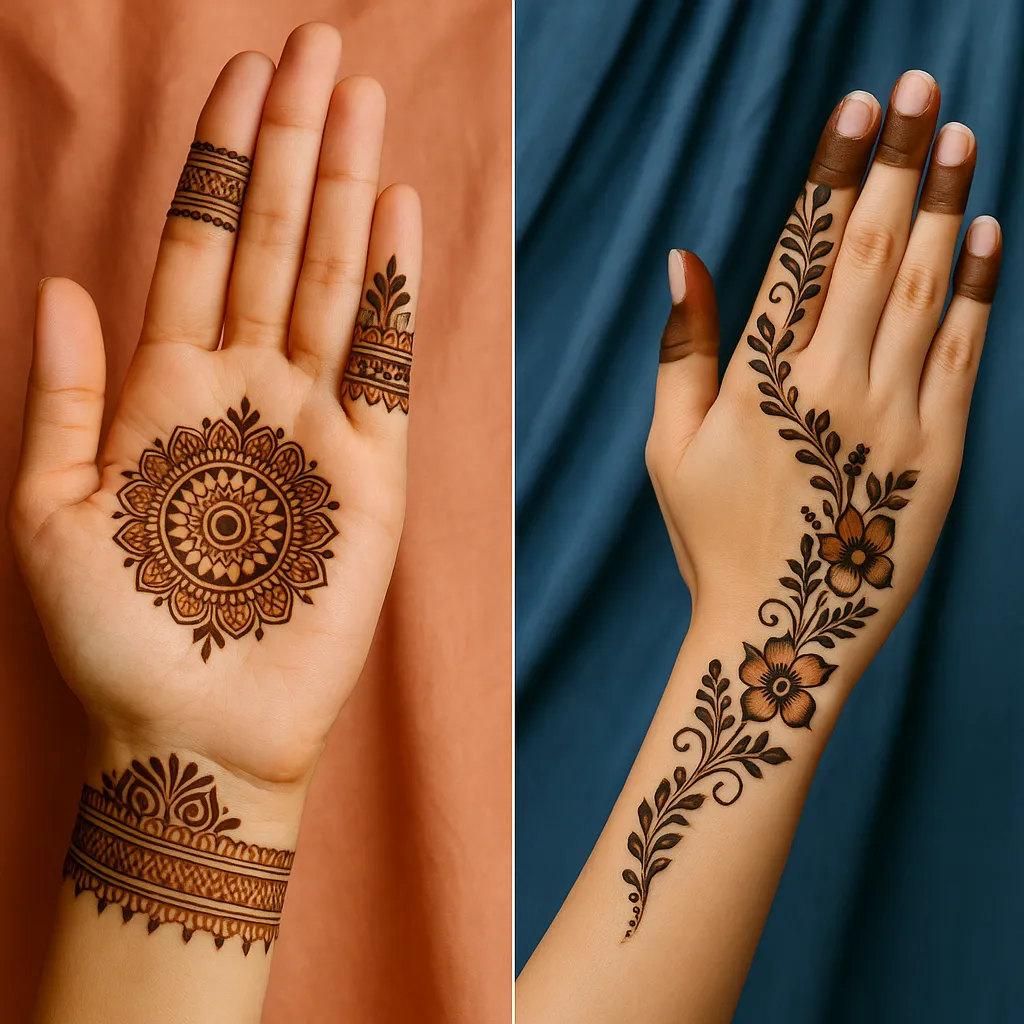
🧼 Stain Quality – Which Side Gets Darker?
Generally, the front hand stains darker than the back. That’s because:
- The palm has thicker skin that absorbs more dye
- It’s less exposed to sun and daily rubbing
- The natural warmth of the palm helps color development
💡 To improve back-hand color, wrap your hand, apply clove steam, and avoid water for 24 hrs.
🤔 Still Confused? Choose Based on Your Personality
| Personality | Best Side | Why |
|---|---|---|
| Cultural & traditional | Front hand | Allows deep symbolism |
| Trendy & expressive | Back hand | Stylish & modern |
| Minimalist | Back or side hand | Elegant, clean look |
| Bold bride | Both | Use contrast for balance |
| Time-conscious | Back hand | Fast to apply, easy to dry |
❓FAQs – Choosing the Right Mehndi Side
Q. Can I just apply mehndi to one side?
Yes! For casual events, just back-hand mehndi is common. For weddings, both is better.
Q. Which side hurts less while applying?
Neither hurts, but back hand is easier to sit through if you’re short on time.
Q. Is back-hand mehndi suitable for religious occasions?
Yes, but front-hand is more traditional and symbolic for pujas and rituals.
🔚 Final Thoughts – Your Hands, Your Story
Whether you choose the front, the back, or both, your mehndi should reflect you. Your style, your story, your celebration.
The front-hand is where culture speaks. The back-hand is where fashion lives. Together, they turn your hands into a canvas of confidence, beauty, and meaning.
So go ahead — express yourself. Pick your side… or pick both. Because mehndi isn’t just tradition anymore — it’s transformation.
